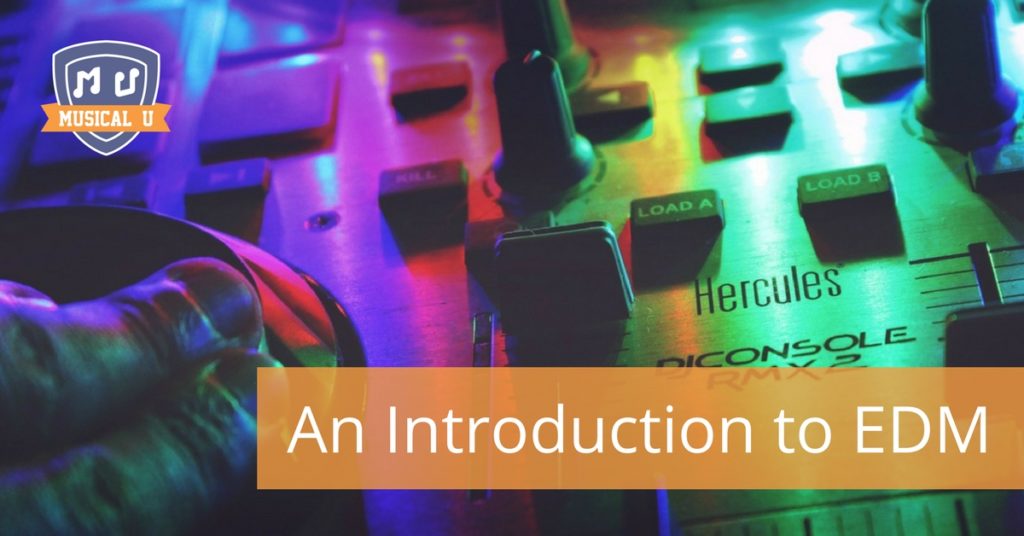Whether you’re an avid listener or someone who’s just beginning to wonder what it is, EDM is a fascinating style of music. The catchy rhythms and complimenting sound additions make it both incredibly danceable and fun to listen to.
Want to learn more about EDM? Read on for a crash course on the basics of this art form.
What is EDM?
EDM (Electronic Dance Music) is an umbrella term that refers to a wide variety of similar (but not identical) music genres. The music almost always has a repetitive percussion track and typically includes a melody played by a synthesizer laid over the drumming.
Where did EDM come from?
The first ancestor of modern dance music was likely the music of disco artist Giorgio Moroder. Other examples of early EDM-style pieces include the electronic music of Kraftwerk and Yellow Magic Orchestra. All of these artists were working in the late 1970s, when the popularity of disco music was about to see a sharp decline.
After the virtual death of disco, the early 1980s were used as a time of musical experimentation for those looking to make new dance music. Over time, more and more synthesizers and drum tracks came into play, eventually becoming the various genres of EDM we know today.
What are the genres of EDM?
As we mentioned, there are a number of music genres that fall under the EDM category but these are the main three sub-genres:
- House Music — This type of music typically includes mid-tempo percussion, lots of shuffling hi-hats, jazzy keyboards, and tropical sounds such as congas, timbales, and horns. House music gives off a warm sort of vibe and generally adds a positive feeling to the room.
- Techno Music — Some might describe techno as cold or mechanical—quite the opposite of the warm house music discussed above. It includes plenty of experimental sounds and strives to give off a futuristic feel much of the time.
- Trance Music — Trance music is, as the name suggests, a hypnotic genre of music. It is very focused on the build-up and break-down of the song, making the melody the focus.
How can I learn to play EDM?
To begin with, you’ll need to learn the basics of music. Some of the most important elements of EDM include the rhythms and basic chord progressions. Fortunately, all of these things and more can be learned right here at Musical U.
The next step is to find a good digital audio workstation, also known as a DAW. Essentially, this is the software you’ll use to build your music and the most important tool for creating your art. A good DAW will likely cost a bit of money, but will include some synths and drum samples to get you started.
Equipped with the basics of music and a good DAW, you’re ready to begin experimentation. Watch YouTube videos, gather all the knowledge you can, listen to your favorite electronic dance music, and play with your workstation as much as possible. The more you immerse yourself and focus on your music, the better you’ll become.
EDM is interesting and exciting for both the audience and the musician. Therefore, it’s a great style of music to pick up, especially if you want to stay active in the party scene.
Are you an EDM artist? Do you have your own knowledge on the topic?
Please share in the comments!







